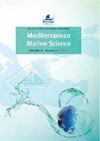重建结状Cymodocea nodosa的动态,作为检查地中海宣布的海洋保护区保护状况的工具
IF 2.3
3区 环境科学与生态学
Q1 MARINE & FRESHWATER BIOLOGY
引用次数: 0
摘要
海草栖息地是生物圈中最有价值的生态系统之一。它们支持渔业生产、减缓气候变化、改善水质和保护海岸。面对目前这一沿海环境关键组成部分加速损失的全球危机,保护运动已经付出了巨大努力,以使其下降曲线趋于平缓。尽管对海草生态系统的功能及其如何应对压力的了解在过去几年中有所改善,但西非仍存在主要差距,包括基本的生态和分布知识。本研究旨在首次利用重建技术作为海草生长的间接测量,调查Al Hoceima国家公园(地中海摩洛哥海岸唯一的官方海洋保护区)两个Cymodocea nodosa草甸的结构发展和动态。附生植物对青松叶片的入侵显著,而叶片产量、芽密度、地上生物量和地下生物量、根茎垂直伸长和水平伸长均处于最低记录值。笋龄结构表明,从第二年开始,笋成活率有所下降。由于招聘速度非常缓慢,人口的净增长率下降了。除了这种负增长趋势外,CymoSkewm生物指数表明两种草甸的生态状态均为轻度污染。海草面临着许多压力,主要是拖网捕捞和外来物种入侵。Al Hoceima国家公园的石竹面临的主要保护挑战是确保这一海洋保护区得到有效实施和积极管理。在此之前,形成栖息地的海草物种并没有得到保护。本文章由计算机程序翻译,如有差异,请以英文原文为准。
Reconstruction of Cymodocea nodosa’s dynamics as a tool to examine the conservation status of a Mediterranean declared marine protected area
Seagrass habitats rank amongst the most valuable ecosystems in the biosphere. They support fisheries production, climate change mitigation, water quality improvement, and coastal protection. Faced with the current global crisis of accelerating losses of this key component of coastal environments, strong efforts have been expended within the conservation movement to flatten their decline curve. Although understanding the functioning of seagrass ecosystems and how they respond to stressors has improved over the last years, major gaps exist for West Africa including basic ecological and distributional knowledge. This study aimed to investigate, for the first time, the structural development and dynamics of two Cymodocea nodosa meadows in Al Hoceima National Park (the unique official marine protected area of the Mediterranean Moroccan coast) using the reconstruction techniques as an indirect measurement of seagrass growth. C. nodosa’s leaves were remarkably invaded by epiphytes while leaf production, shoot density, above and belowground biomass, and vertical and horizontal rhizome elongation were in the lowest recorded values. Shoot age structure showed that since the second-year class, the survival rate of shoots has decreased. Regarding the severely slow recruitment rates, the populations’ net growths declined. Besides this negative growth trend, CymoSkewm biotic index assigned a slightly polluted ecological status to both meadows. The seagrass faces numerous pressures, mainly fishing by trawling and alien species invasion. The primary conservation challenge for C. nodosa of Al Hoceima National Park is ensuring that this marine protected area becomes operationally implemented and actively managed. Until then, the seagrass habitat-forming species is not safeguarded.
求助全文
通过发布文献求助,成功后即可免费获取论文全文。
去求助
来源期刊

Mediterranean Marine Science
MARINE & FRESHWATER BIOLOGY-
CiteScore
5.20
自引率
17.90%
发文量
34
审稿时长
>12 weeks
期刊介绍:
The journal Mediterranean Marine Science (MMS), published by the Hellenic Centre for Marine Research (HCMR), issues three volumes annually. The journal welcomes original research articles, short communications, New Mediterranean Biodiversity records, extended reviews, comments, and Theme sections in all fields of Oceanography, Marine Biology, Marine Conservation, Fisheries and Aquaculture in the Mediterranean area and the adjacent regions. All content is peer reviewed.
 求助内容:
求助内容: 应助结果提醒方式:
应助结果提醒方式:


